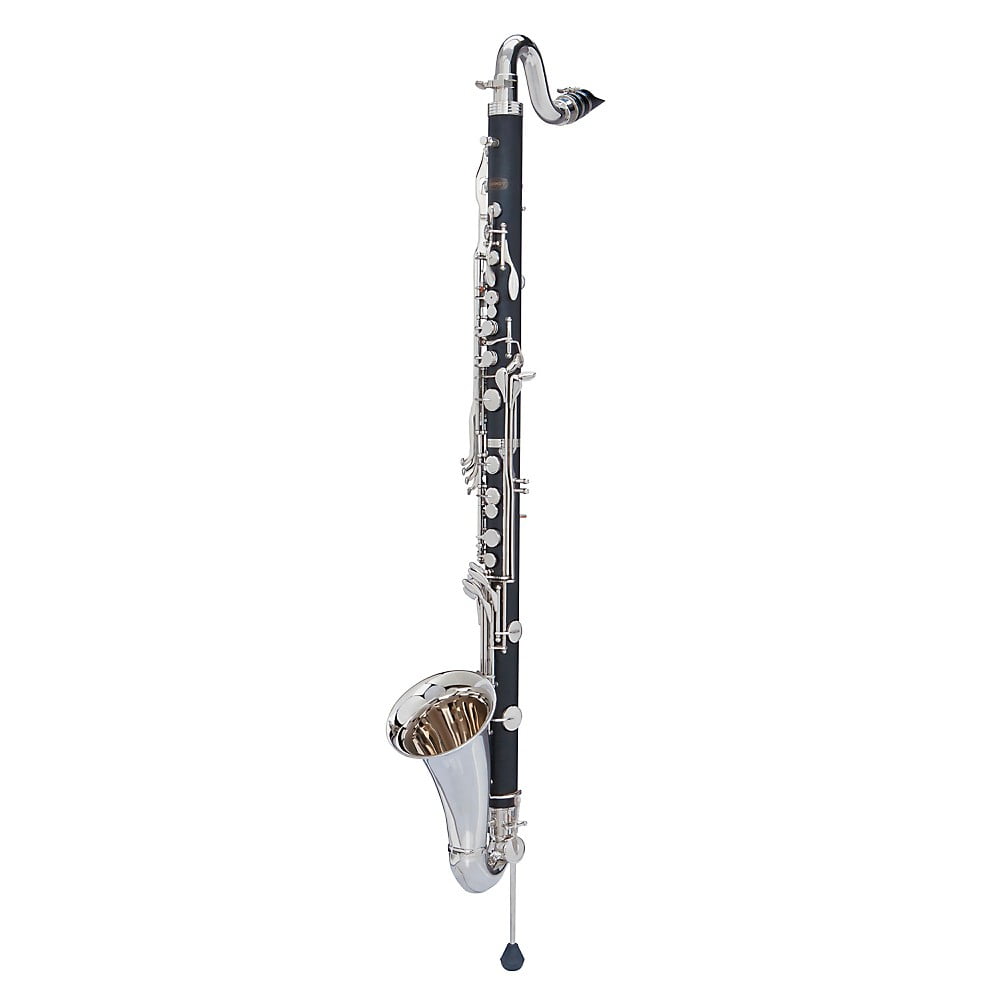

It is also used in clarinet choirs, marching bands, and in film scoring, and has played a persistent role in jazz. In recent years, the bass clarinet has also seen a growing repertoire of solo literature including compositions for the instrument alone, or accompanied by piano, orchestra, or other ensemble. A bass clarinet is not always called for in orchestra music, but is almost always called for in concert band music. The bass clarinet has been regularly used in scoring for orchestra and concert band since the mid-19th century, becoming more common during the middle and latter part of the 20th century.

This gives the bass clarinet a usable range of up to four octaves, quite close to the range of the bassoon indeed, many bass clarinetists perform works originally intended for bassoon or cello because of the plethora of literature for those two instruments and the scarcity of solo works for the bass clarinet. According to Aber and Lerstad, who give fingerings up to written C 7 (sounding B ♭ 5), the highest note commonly encountered in modern solo literature is the E below that (sounding D 5, the D above treble C). Overall, the instrument sounds an octave lower than the B ♭ soprano clarinet.Īs with all wind instruments, the upper limit of the range depends on the quality of the instrument and skill of the clarinetist. These three lowermost half-steps are played via additional keys operated by the right thumb, some of them often duplicated in the left- or right-hand little-finger key clusters. At concert pitch this note is the B ♭ below the second ledger line below the bass staff or B ♭ 1 in scientific pitch notation.
#NEW BUNDY BASS CLARINET PROFESSIONAL#
Many professional or advanced bass clarinet models extend down to a low C (sounding B ♭, identical to the bassoon's lowest B ♭), two octaves below written middle C. Depending on whether the right hand ring finger (used in fingerings for middle D ♯ and below) is down or up, the lower or upper vent hole will open. Newer models typically have an automatic register key mechanism, where a single left thumb key commands the two vent holes. In addition, older bass clarinets have two register keys, one for middle D ♯ and below, the other for middle E and higher. This allows a form of "half-hole" fingering that allows notes in higher registers to be played on the instrument.

A significant difference between soprano and bass clarinet key work is a key pad played by the left-hand index finger with a vent that may be uncovered for certain high notes. This key was originally added to allow easy transposition of parts for the relatively rare bass clarinet pitched in A, but it now finds significant use in concert band and other literature. Most modern Boehm system bass clarinets have an "extension" key allowing them to play to the (written) E ♭. However, bass clarinets are also manufactured in Germany with the Oehler system of keywork, which is most often known as the 'German" system in the US, because it is commonly used in Germany and Austria, as well as Eastern Europe and Turkey bass clarinets produced with the Oehler system's predecessor, the Albert system, are still in use, particularly in these areas. This cylindrical bore differs from the saxophone's conical one and gives the clarinet its characteristic tone, causing it to overblow at the twelfth (octave + fifth) compared with the saxophone's octave.Ī majority of modern bass clarinets, like other clarinets in the family, have the Boehm system of keys and fingering.

(Metal bass clarinets exist, but are rare.) More significantly, all clarinets have a bore that is basically the same diameter along the body. Bass clarinet bodies are most often made of grenadilla (African Blackwood) or (more commonly for student-instruments) plastic resin, while saxophones are typically made of metal. While Adolphe Sax imitated its upturned metal bell in his design of the larger saxophones, the two instruments are fundamentally different. The bass clarinet is fairly heavy and is supported either with a neck strap or an adjustable peg attached to its body. Early examples varied in shape, some having a doubled body making them look similar to bassoons. Most modern bass clarinets are straight-bodied, with a small upturned silver-colored metal bell and curved metal neck.


 0 kommentar(er)
0 kommentar(er)
